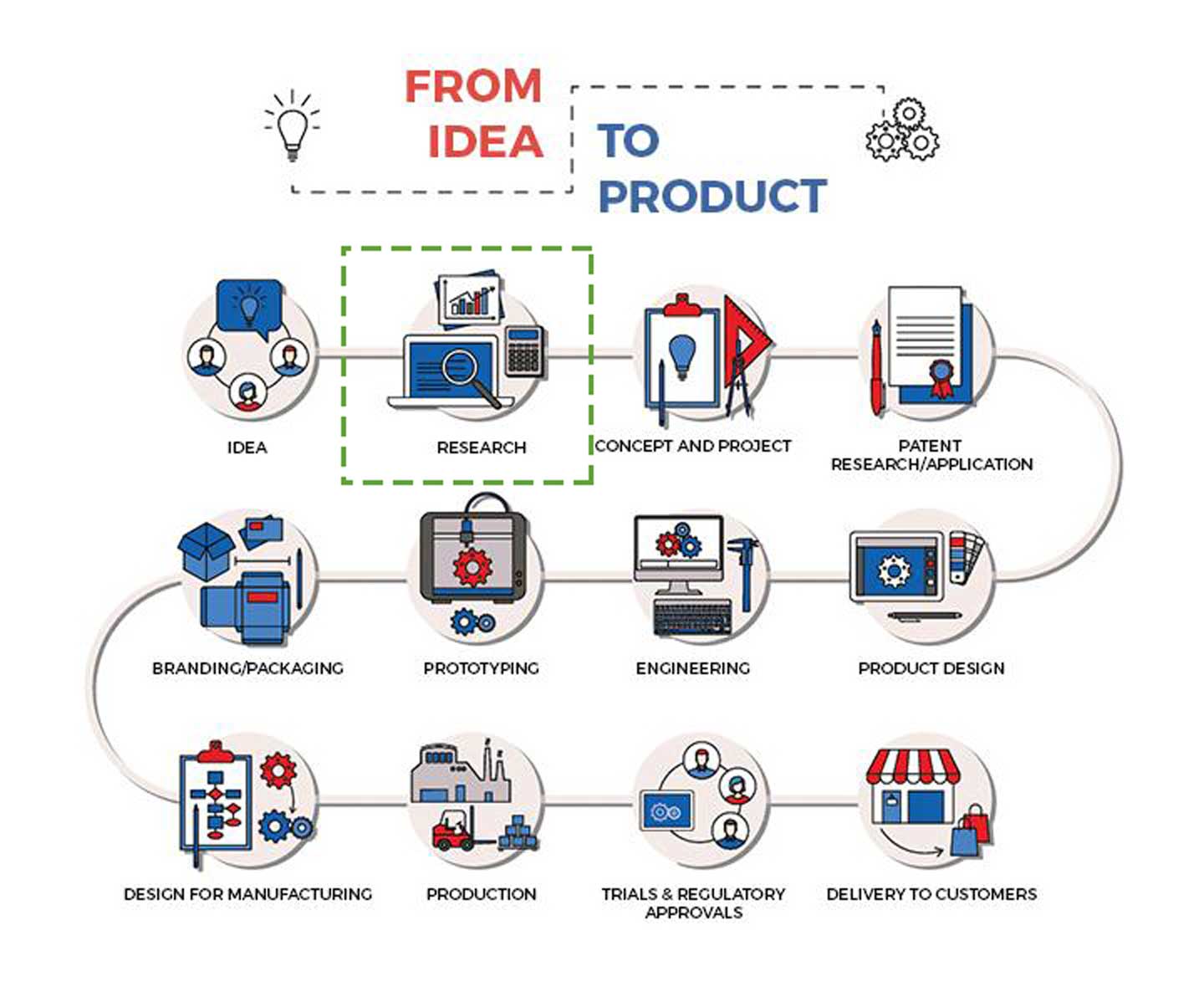In this blog series, we deep dive into each stage of the idea to product lifecycle, from identifying a problem and formulating an idea through production and marketing. In each post, we’ll focus on one of the twelve unique aspects of the cycle and its impact on the end product.

Stage 2 of 12: Research
So far in this blog series, we’ve described the initial stage of the idea to product lifecycle, formulating an idea. Now we’ll transition into the second stage: doing the research.
Questions to consider
As you begin the research stage of the idea to product lifecycle, there are a few questions to consider:
- If your intent is to solve a problem, is there a demand for a solution to that problem?
- What similar products already exist?
- How will you improve on what’s already been done?
These questions can be grouped into two research categories: demand and competition.
Demand: Does a problem exist?
To address the first question, you need to determine whether there’s a great enough need for your product to exist.
Keeping with the house example from the previous blog post, if you’re building a house in an already established neighborhood, you’ll need to consider whether there is a demand for more houses to be built in the area. You could compare the concentration of available housing within the area to the size of the population to determine if there is a lack of housing. You may also consider researching the demographics of the population within the area to determine if people live in houses versus apartments, etc. This research on the overall demand for a certain product will help to determine if the project will be worth your time based on its perceived benefits to both you, as the producer, and to the potential consumers.
Your product should be a unique and innovative solution to an existing problem. If the problem you observe is only a problem to a very small, select group of people, it won’t matter how innovative your solution is because it will not stand out as a beneficial solution to a problem others have.
Competition: What does the market look like?
Once you’ve determined that the problem is widespread enough to warrant a solution, the next step is to think about any solutions that may already exist. Although the common saying is, “don’t reinvent the wheel”, it should not entirely dissuade you from pursuing a project even if there’s already competition. With most things, perhaps with the exception of the wheel (I think we can agree that round wheels are the way to go), there is almost infinite room for improvement.
An example of this would be the highly-competitive market for smartphones. There is still room for even Apple to improve in this area, and they do every year. Despite Apple’s almost overwhelming dominance, other producers like Samsung and Google continue to throw their hat in the ring by releasing new products alongside Apple. To compete with each other, they must differentiate themselves. They do this by offering better phone cameras, battery life, durability, etc. They’re all in pursuit of gaining control of the market by offering unique and innovative solutions to common customer problems. Without the research stage, how would Apple have known that there was a need for anamorphic emojis?
During the research stage, as you begin to conceptualize the design for your product, you should consider which features can be added to differentiate your product from what already exists in the market.
Changes require research
Like the previous idea stage, the research stage is iterative. As concepts and designs change, and as you learn more, it may be necessary to revisit the research stage to determine whether the product is still meeting a demand and if it’s doing so better than the competition.
What’s next?
Now that you’ve formulated an idea and done the initial research into the existing product market, it is time to begin developing the concept for your product. Stay tuned next week for the next stage of the idea to product lifecycle, concept and project.
























